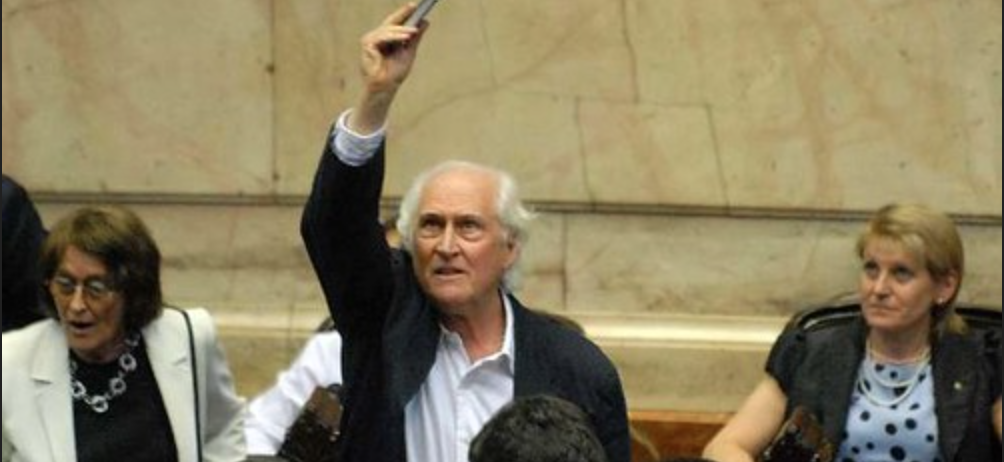Film Schooled: The patrons and the patronized of film festivals

Photo courtesy of Nicolás Eduardo Feredjian via Creative Commons.
Four days ago, film director and revolutionary Fernando Solanas died. In a film school dominated by histories of Hollywood and the emergence of mega-media, I’ve only had one class, one lecture and one reading dedicated to his work.
Solanas, along with Argentine filmmaker Octavio Getino, helped launch the Latin American collection of “Third Cinema” film movements with the publication of their manifesto “Toward a Third Cinema” in 1969. The manifesto and the movement it gave rise to reflected Solanas and Getino’s membership in the Grupo Cine Liberación, which was a smaller Argentine film movement that reflected the pro-labor and working class values of the then-Peronist Left, named after Argentine president Juan Perón (though arguably the lasting impact was achieved by First Lady Eva Perón — have to give a woman credit where it is due).
“Toward a Third Cinema,” in a very basic overview, rejected everything about Hollywood, or the “First World.” In their view, the system is inextricably tied to neocolonialism and the sustainability of capitalism, creating films that were and meant nothing more than potential profit and the passing off of bourgeois values. The “Second World” is of the European auteurs, focused solely on the individual amongst the breadth of new art house filmmaking but still benefited from the First World funding at the time Solanas and Getino were writing.
“Third Cinema” rejects and is an active resistance to commercialization and the idea of the singular individual. Instead, Third Cinema filmmakers are a collective, producing films in a guerilla style necessary for anti-imperialist thinking to survive. These films need to be risky, they need to be shown outside of the normal exhibition model and they absolutely need to engender revolutionary appeal and spark activism for the masses. The movement saw ripples all across South America and Cuba, along with filmmakers in the Middle East, Africa and Southeast Asia and indigenous filmmakers within the First World.
In 1986, the Edinburgh Film Festival — yes, the Edinburgh in Scotland — hosted a conference on Third Cinema and its implications. They invited zero Latin American filmmakers, Solanas and Getino included.
Film festivals have historically been credited with bringing “new” films, filmmakers and national cinemas to the fore, despite many being established in their city, country or region of work.
For example, Djibril Diop Mambéty, a Wolof filmmaker working in Senegal who has been included in Third Cinema conversations, had made short films that saw success in the Tunis Carthage Film Festival before going on to win the International Critics Award at Cannes and the Special Jury Award at the Moscow Film Festival for “Touki bouki.” In a different vein, his niece, Mati Diop, made history last year for being the first Black female director in competition for the Cannes Palme d’Or for her film “Atlantics.”
Some argue that these high-profile festivals such as Cannes, Venice, TIFF and more are better to show at least some films from underrepresented groups rather than none at all. Others argue that the publicity and sometimes funding from festivals are necessary for representation in the greater market and, as artists’ life work, for survival.
Let’s take on the second argument because the first doesn’t merit discussion. The International Film Festival Rotterdam in the Netherlands has provided decades-long support for filmmakers through the Hubert Bals Fund. Bals was a director who had a particular interest in Asian cinema (the white-man-making-Asian-culture-their-passion jokes write themselves) and, after an untimely death, his interest sparked a fund that awards money to “developing world” filmmakers in every stage of the process.
There are catches, of course. The films must come from countries that make the DAC List, a grouping of countries who can receive official development assistance, an eligibility criterion determined by the World Bank, and members of the United Nations’ Least Developed Countries list — both heavily influenced by Western standards of development at certain stages in, usually, capitalism. The films usually center around at this point allegorical representations of poverty, quite often featuring young children within underrepresented groups who have to navigate specific traumas that constitute a bulk of the “poverty porn” shown at festivals. Also, the films must premiere at IFFR, a seemingly small consideration but one that can remove them from opportunities at other competitions and put years in between the project’s founding and when local audiences of the filmmaker’s country can see it.
Lastly, IFFR, by handing European money to these filmmakers, become the co-producer, filling a spot that puts pressure on filmmakers to perform to the standards set by the Fund while also allowing the IFFR to point to these films and say, “Look what we discovered, look who we helped and what stories we helped bring to light.”
This is not to say that the Fund has not helped bring incredible projects to the screen. However, it does raise the question of who film festivals are posturing for, because it certainly isn’t for filmmakers and it is certainly not for the masses who enjoy film. The festivals need to position themselves as international productions of culture, fixtures in the highbrow film realm that continually bring the best of the best to the limelight.
What these festivals cannot escape is the white financiers that spin the projector with one hand and pat themselves on the back with the other. They work beyond reproach to further some of the same neocolonial paternalism because criticism of them is drowned out by publicity and more funding. Solanas worked within his entire artistic life to reject these sorts of influences, and his ideas will remain eternally relevant.
Lauren Mattice is a senior writing about film culture. She is also the digital managing editor at the Daily Trojan. Her column, “Film Schooled,” ran every other Wednesday.

